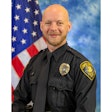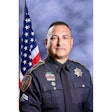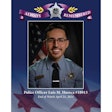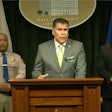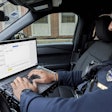Sandra Antor was not look for fame when she set out on a 745- mile journey from her hometown of Miami to visit friends in January 1996. But the 26-year-old nursing student's hesitance to pull over promptly for a South Carolina patrolman who was pursuing her in an unmarked car landed her and the officer in the national news. The situation raised new question about the public's perception of police.
The incident was a stark reminder of how closely scrutinized law enforcement can be in the electronic age: A video of the encounter was widely distributed to news agencies and played for a global audience on CNN. But for police agencies eager to learn from the struggles of their peers, the incident also served as a training course in how to anticipate and diffuse fear during a traffic stop, both on the part of the motorist and the police officer.
"Let's face it, we scare people," said John Singleton, a training instructor at the Indiana Law Enforcement Academy and a veteran state trooper. "We better learn to deal with that."
Antor was scared the afternoon she was pulled over by South Carolina Lance Cpl. W.H. Beckwith. She'd started out early in the day from Miami in a rental car, and by the time she'd hit a stretch of small towns and lonely mile markers in rural South Carolina, she was tired, and she was speeding.
In her rearview mirror, she spotted a plain beige Ford Crown Victoria with a blue light flashing in the corner of the windshield. She was confused at first and slowed down to let the car pass, but did not pull over.
"I thought somebody was trying to rob me or something because they saw I was alone," Antor later told a reporter with Dateline NBC. It was a fear based on reality: A rash of robberies and murders of tourists a few years before had prompted Florida authorities- from the governor on down- to campaign for motorists not to stop for any vehicles unless it was readily identifiable as a police car.
Beckwith has made 15 other stops that day, and each had gone smoothly. A video camera mounted on his car that was triggered when he flipped on the flashing light, showed that he had been polite during each of the previous stops as he issued tickets, chiding motorists to slow down or buckle up.
The incident with Antor started when the radar beam on his patrol car was tripped. The beam caught Antor, who was driving a late-model silver car in the left lane passing traffic at 15 miles per hour over the speed limit. Beckwith started his pursuit, flipping on his blue light and siren, but almost eight miles went by before Beckwith put on his trooper's hat.
What the videotape then caught later came to haunt Beckwith. The tape shows an agitated Beckwith approach Antor's car with his fun drawn. He curses at her and screams for her to get out. Beckwith then opens the door and pulls her from the car.
On the tape, Antor tells Beckwith she can't get out because she still has her seat belt on. Beckwith puts his gun back in the holster, pulls her out, shoves her to the pavement and threatens to cut her clothes as he handcuffs her. When she has difficulty getting up, he threatens to spray her with pepper mace.
As she struggles to get up, he shouts: "Roll over and stand your a-up, lady, now! You're fixin' to taste liquid hell in a minute!"
[PAGEBREAK]
Public vs. cop perception
Later, Antor told a reporter she thought Beckwith was crazy. "I thought this was a scene out of 'COPS.'... I never seen anything like this before in my life."
Beckwith arrested Antor and ticketed her for speeding and failing to stop for a blue light. The latter charge was dismissed. Within two days of the incident, Antor contacted attorneys and filed a complaint against Beckwith with the highway patrol. In the complaint, Antor accused Beckwith of racism, saying she was brutalized because she is black. Both Beckwith and his attorney denied the charge. What Beckwith does concede, however, was that he acted out of fear.
"The reason I had my gun drawn is because I had been behind her for quite some time," Beckwith told Dateline NBC. "And I didn't know she didn't have a gun. I didn't know that she wasn't hiding drugs. I didn't know any of this."
Beckwith was a seasoned trooper. On the job for 11 years, he had racked up an impressive pile of letters of commendation. His father was a trooper for 30 years. He knew the dangers.
"Anything you stop anybody, you never know what you're walking up on," Beckwith said. "And you always have the threat of imminent danger. I mean always. Regardless if it's your grandmother or it's some 17-year-old that's high on crack that's going to, you know, basically kill you."
In the weeks after the incident, much of the criticism focused on the use of unmarked police cars. South Carolina legislators called for their total ban in the state; an Indiana legislator announced he'd told his wife never to stop for an unmarked police car. And some criminal justice experts soon predicted unmarked police cars would soon become a thing of the past. But Beckwith's boss, South Carolina Public Safety Director Boykin Rose, said the incident was not about the kind of car Beckwith was driving.
"This case has nothing to do with unmarked cars," Rose told reporters after he made the videotape public. "This trooper just lost control."
Others in law enforcement concur.
"I know it's easy to look back and analyze what went wrong," said Sgt. Sandra Houston, acting commander in charge of public affairs for the California Highway Patrol. "But on that tape, it looked like (Beckwith) lost all his composure, and in doing that, he gave up control of that situation. That's the fatal mistake. If you maintain your composure, you keep your focus."
But maintaining composure in the face of the unknown is not easy.
"You know the old saying," Singleton said. "There is no such thing as a routine traffic stop."
Indeed, Beckwith later said some of the anxiety he experienced that day stemmed from his recollection of a "routine" traffic stop that went fatally awry in 1992. That year, a fellow South Carolina trooper was shot to death while making a traffic stop on the same stretch of highway. The incident sparked a spirited discussion about the use of unmarked cars and about how to handle the public's fear of the police.
Clearly marked for protection
Although top South Carolina Highway Patrol officials downplayed the role of Beckwith's unmarked car, they quietly began to reduce the number of unmarked cars on the state's highways three years ago. In doing so, the followed a pattern set but other agencies that had already grappled with the issue.
[PAGEBREAK]
In California, for example, police are barred from using unmarked cars in traffic enforcement, and the state's highway patrol undercover officers who use unmarked cars for surveillance in drug and auto-theft investigations are discouraged from making traffic stops.
"It's just common sense," said Houston. "If the vehicle is not clearly marked, the motorists wondering, 'Is that a cop?' When an individual comes out of an unmarked car or with no uniform, it just creates too much confusion."
Some city county law enforcement agencies have also banned unmarked cars for their traffic divisions and forbid their deputies from hiding while trying to catch speeders. Some departments' policies were prompted by the rare but real problem of police imposters.
In York County, S.C., for example, motorists have twice reported seeing "blue-lighted bandits" in the last year. These were men who had equipped their cars with flashing blue lights- which can be bought by civilians for as little as $29 a light- and tried to stop women driving alone.
In neighboring Lexington County, S.C. sheriff's deputies arrested a 21-year-old-man for impersonating a police officer. Several drivers told police they had been pulled over by a man driving an unmarked car with a dash- mounted blue light. The man walked up to the drivers and pulled a pistol, identifying himself as an officer. He told the drivers they could avoid a traffic ticket by giving him $10.
In Lexington County, Sheriff James Metts had long ago begun to instruct his officers that if they tried to stop a car operated by a woman who is alone, they should follow her until she reaches a safe place- as long as she does not try to speed off. It is a policy followed by state police agencies around the nation, both by departments that use unmarked cars, as well as those agencies that do not.
In North Carolina and Florida, for example, where unmarked cars are used in traffic enforcement, troopers are warned to be patient with motorists who may be uncertain they are officers.
And in Columbia, S.C., city police officers are allowed to use unmarked cars to remain undetected while using radar to catch speeders, but the department requires that a marked unit stop the offender and make the arrest.
Following the incident involved Beckwith, state legislators rushed to try to pass legislation banning the use of all unmarked cars by any law enforcement agency, state or local, in any traffic stop. Some officers call that overreaction and contend only the public will be harmed. If unmarked cars are banned from making traffic stops, for example, then what should a police supervisor or detective, who routinely drives unmarked cars, do when they spot a drunken driver weaving down the road? Isn't it the officer's legal responsibility to stop the driver before someone gets hurt?
"I think the risk to the public posed by dangerous drivers is certainly greater than the remote possibility of being stopped by a police imposter," said Metts, who fears any police that takes away an officer's discretion.
"It all boils down to reasonable individuals who have been trained properly. An officer to have the right to use common sense and discretion," Metts said.
Geoff Alpert, a criminal justice professor at University of South Carolina and a national authority on police management says there is a use for unmarked cars in surveillance and undercover work, but not for traffic enforcement.
"The downshide is that you don't know they're police, you don't know how to respond, and the police get upset if you don't stop," Alpert said. "The point of traffic enforcement is to keep the roads safe and get people to slow down. You can easily do that in marked cars."
But some agencies put the burden for a successful traffic stop on the officer, not the car.
In Indiana, state police use unmarked Mustangs and Camaros that are equipped with darkly tinted windows to nap speeders on stretches of highways notorious for high- speed traffic problems. The department only allows their use during the day.
[PAGEBREAK]
Playing verbal judo
But along with the use of unmarked cars, the agency now requires training for all new recruits in "tactical communications," or "verbal judo" as it is know at the Institute of Police Technology and Management at the University of North Florida.
Forty of Indiana's state troopers were trained in communication skills at the UPTM five years and have integrated what they learned into their daily tasks.
It prompted because troopers say themselves ill-equipped to handle the majority of traffic stops that most often involve law- abiding citizens who happen to be speeding.
"Only 7 percent of all our stops involve having to lay our hands on a person," said Singleton, who helps train the state police's new recruits in traffic enforcement. "We were getting plenty of training to handle that. But what we hadn't been trained to deal with was the other 93 percent of our contacts."
According to Singleton, the communications program his troopers are trained in involves using a sliding scale of escalation, almost always starting with the most minimal force. Singleton said the program is not just for show.
"Look, it keeps our officers a lot safer, and it keeps the department from paying out excessive liability claims," Singleton said, "And it helps our image with the public. We need that. We can't be everywhere and we still need the public's help fighting crime. If the public sees us as the enemy, they're not going to want to help us."
Public trust can be a fragile thing. Just ask the officers of the California Highway Patrol who suffered a tragic lesson when the department was violated by two of its own members. In 1987, it was a uniformed police officer in a fully marked car who pulled over a 20-year-old college student near an off-ramp of a California interstate. The woman turned-up dead, strangled and thrown from a 75-foot-high bridge. California Highway Patrol officer, Craig Alan Peyer, was arrested and later convicted for her murder.
Three years earlier, a fellow CHP officer had also been charged with murder, accused of raping and murdering an aspiring actress he had stopped while on patrol.
The incidents burned in the public's memory. Nine months after Peyer was arrested, a 23-year-old California woman was found guiltily of failing to yield to a law enforcement officer, but the judge suspended the $25 fine, citing the woman's fear of police. She told the judge she refused to pull over immediately for the sheriff's deputy, who had caught her speeding, until she reached the store where she worked.
The murders temporarily tarnished the golden image of the California Highway Patrol as the trusted guardians of the state's roadways. CHP officials said they had to work hard to regain the trust.
"It was difficult for us to make stops even in marked cars," said Houston. "The public felt like the trust had been violated, and it had been. For a while people were scared of us."
To tackle the problem, the agency decided not to shy away from the issue of fear, Houston said.
"We decided we couldn't hide anything (about the incident), or shy away from reporters' questions about it," she said.
Houston said the CHP worked with the investigating agencies in the murders to put out a series of press releases, providing as much detail as they could on the investigations. They also help public forums, went on TV and radio, and worked with print reporters to get out the message that the departments' officers could still be trusted.
"What we wanted people to know is that although the incidents occurred, they didn't represent an entire agency," Houston said. An important element, she added was the department's reputation. "We had enjoyed a very good relationship with the media and with the public before those incidents," Houston said. "That helped us a lot...A good track record can make a very big difference."
Maureen Hayden is a reporter for The Evansville (Ind.) Courier.




